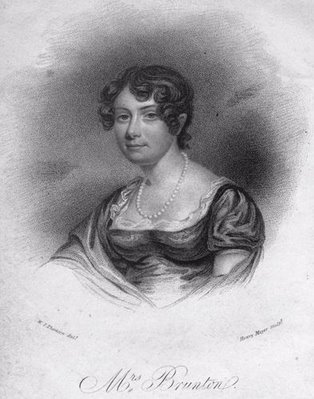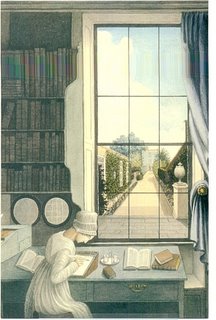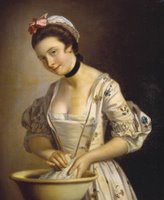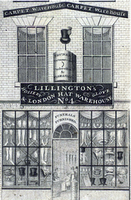
Last year I read Discipline by Mary Brunton (1778-1818). Mary was a Scottish novelist, a contemporary of Jane Austen, whose life, like Austen’s, was cut short by her early death–in childbirth for Brunton. She left us just 3 books, one Emmeline, unfinished.
Self Control, her first published novel was popular and mentioned in Austen’s letters, albeit with less than admiration.
I read Discipline because someone somewhere said that it had a good description of a Regency era ball. It did. The London part of the story was very interesting. The characters had a great deal more freedom than we ever give our heroines. The book’s plot wandered, but there was a lot going on in it. It tells the story of a wealthy but impetuous young woman whose folly and happenstance cause her to descend into poverty and despair, until she reforms her ways and vows to live a disciplined and moral life.
In some ways the book is difficult to slog through. In today’s fiction-world it would be in for some extreme tightening, but Brunton’s voice is an authentic voice of the past, and, to me, it felt like a peek into the real Regency world. One of the things I liked was that Brunton’s characters misbehaved in a grand way. She did not treat their scandals with the delicacy that Jane Austen achieved, but plopped the scandals on the page, front and center. I can just see a Regency teenage girl sneaking her mother’s copy of Discipline and relishing it, like we relished those first romance novels pilfered from our own mothers’ bookshelves.
Here is a very nice piece about Mary Brunton. http://www.chawton.org/biography.php?AuthorID=49
And here is a link to what Jane Austen said of Brunton’s Self Control, complete with links to the complete text of Discipline, Self-Control and Emmeline, her unfinished manuscript.
http://labrocca.com/marybrunton/
Has anyone read Mary Brunton?
What other novels popular in our Regency time period do you recommend, besides Austen, that is?
What romance novel did you sneak from your mother’s bookshelf?
Cheers!






 Or, you might go into service. Here’s another amazing statistic: in the eighteenth century, one-third of all the population (with the exception of the aristocracy) was in service at some time in their lives—usually until their mid-twenties. About one-third of London’s population were servants. Some people, working in the houses of the rich, rose in the ranks to enter the servant elite as butler, housekeeper, or lady’s maid; even though this illustration is from the mid-eighteenth century, you can see how well-dressed this lady’s maid is. Servants earned room and board, plus “perks”—for a ladies maid or valet, cast-off clothing they could wear or sell—or “vails,” tips from visitors usually given to footmen.
Or, you might go into service. Here’s another amazing statistic: in the eighteenth century, one-third of all the population (with the exception of the aristocracy) was in service at some time in their lives—usually until their mid-twenties. About one-third of London’s population were servants. Some people, working in the houses of the rich, rose in the ranks to enter the servant elite as butler, housekeeper, or lady’s maid; even though this illustration is from the mid-eighteenth century, you can see how well-dressed this lady’s maid is. Servants earned room and board, plus “perks”—for a ladies maid or valet, cast-off clothing they could wear or sell—or “vails,” tips from visitors usually given to footmen. 
